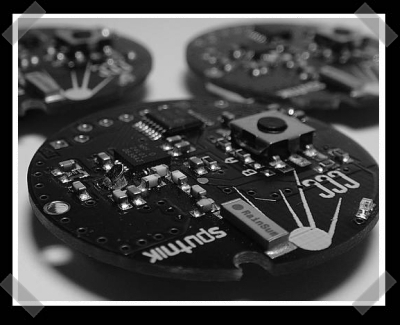
The OpenBeacon project is an open source hardware and software active RFID device. OpenBeacon tags consist of 2.4GHz transceivers and a PIC16F684. One use of the project was to create CCC Sputnik to show the downsides to information culled using data mining from large tracking systems. People who chose to participate and wear the Sputnik tags did so voluntarily to create a database of material for further study. The hardware schematics (PDF) for the first version tags as well as the firmware for all versions has been released. Further creative uses of the OpenBeacon project are strongly encouraged.
As a reminder, the 24C3, the 24th Chaos Communication Congress, call for participation ends on October 12th. The theme this year encompasses all hardware projects and more specifically, steampunk themed submissions. Check out the CCC events blog for more information.
















A question for you RFID’ers out there….
Are RFID ping response times consistent enough to use the total round trip time of a ping and reply as a measure of distance, good to an inch or so?
Use RFID ping times to measure distance? doesn’t the R in rfid stand for Radio? as in, radio waves, transmitted at the speed of light? thus, 1 ms difference in ping times would be equivalent to 186 miles difference in distance…
Well, if light goes at 3×10**8m/s, and if you can sample at 2×10**9/sec, it works out to .15 meters/cycle, or about 5″.
The reason I asked is that I don’t know how consistent ping reply times are, or how small a time slice a receiver can realistically measure. What I’m wondering how accurate position triangulation from multiple rfid transponders could be.
This is likely based on RSSI readings, a measurement of signal strength. It would be possible to determine an approximate relative distance with multiple stationary base stations in a known geometry.
apparently what was done is the device (tag) transmits at four different power levels, and the packet loss per power level at each base station is used to approximate the distance. with enough base stations placed at strategic points, the position of the person can be estimated. (got this from the presentation papers under the downloads section).
very nifty :)
i got an rfid tag about 4 weeks ago i got a parallax reader and use it to log in to my comp
This is just another way for “them” to find you… *puts on tinfoil hat*
Will Intel support open hardware project? It is a big time oss fun, but oshw? Let wait an see.
CaptainQueeg: Generally, no. Especially not in the OpenBeacon project which is an active transmitter, with a microprocessor and all, and therefore has widely varying response times. (Though there are plans to build an OpenBeacon based radio frequency access control system with some protection against forwarding attacks by introducing some time boundaries into the challenge response protocol. 1ms should be possible. While this still is a long way with regards to the speed of light, it should foil forwarding attacks, because it generally would be hard to forward messages between the door and the tag with a bandwidth of 2 MBit/s and less than 1ms of forwarding delay.)
Even outside of OpenBeacon nobody really uses response time measurements. Which is of course due to the fact that most RFID solutions are passive and usually only have a range of 1cm, 10cm or 1m. (I think there were reports about experiments in a Czech airport which included RFID boarding passes based on an UHF backscatter system with ranges on the order of 50m.)
There are papers about RFID distance bounding protocols, which by acurately measuring the response time with very high precision can physically guarantee that the tag is within some preset distance (e.g. 30m) of the reader. See for example Gerhard Hancke, Markus Kuhn, “An RFID Distance Bounding Protocol”, 2005. I’m not aware of any actual implementations of that though. (Needs specialized tag hardware.)
—
Henryk Plötz
GrüÃe aus Berlin
bob clarke: who needs Intel’s support? OSHW works whether or not some dinosaur is interested in it or not.